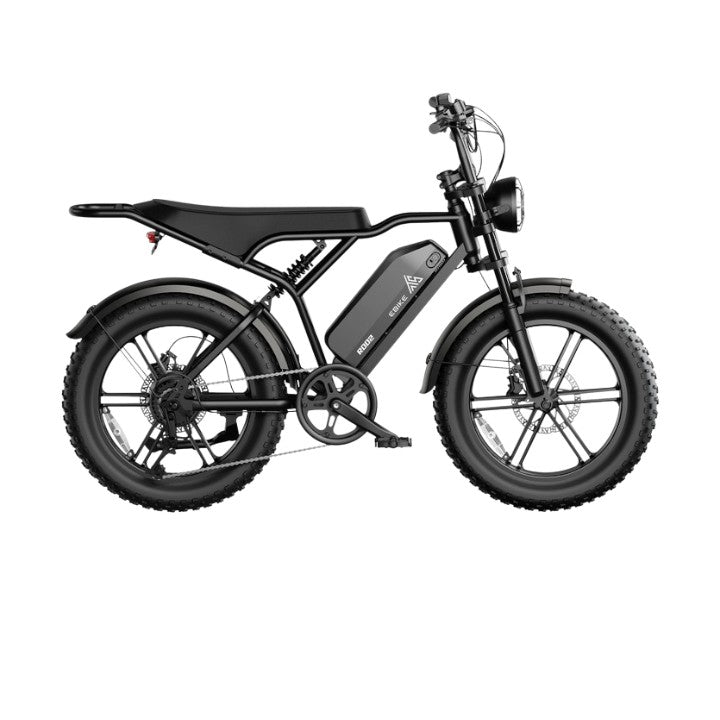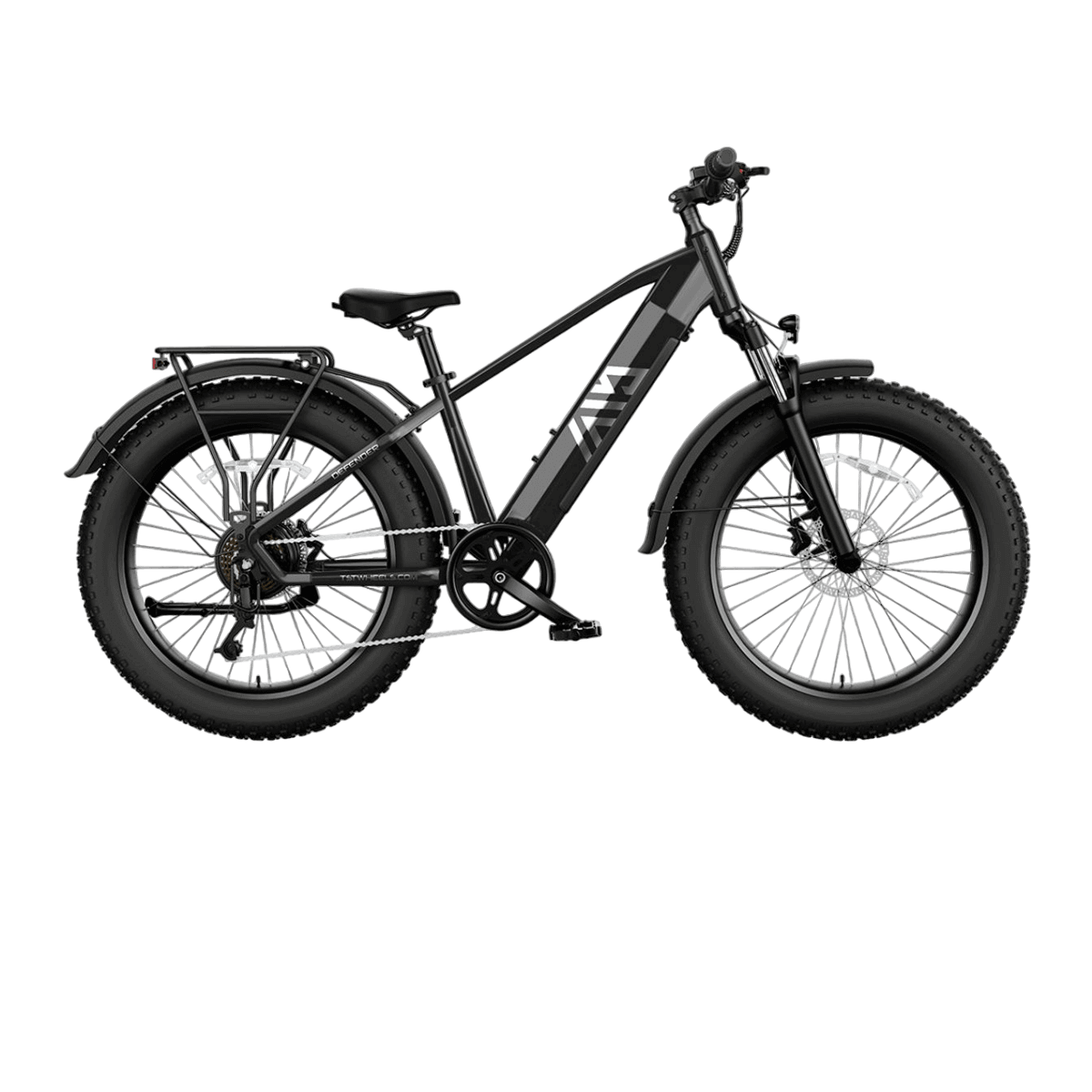A 1000W Motor City E-Bike balances urban practicality with robust performance. Its 1000W brushless motor offers swift acceleration and hill-climbing torque, while the 36V battery ensures efficient energy use for commutes. The lightweight frame (57.32 lbs) and 26" slick tires prioritize maneuverability and stability on paved roads. Mechanical disc brakes and a 7-speed Shimano drivetrain add reliability, making it ideal for daily city travel.
How Does a 1000W Motor Enhance Urban Commuting?
A 1000W motor elevates city riding by delivering quick acceleration, smooth handling of inclines, and reliable performance. The motor’s torque output (up to 70 Nm) tackles stop-and-go traffic effortlessly, while its 23 MPH top speed aligns with Class 2 regulations. Combined with a lightweight frame, it ensures agility without sacrificing power.
Urban commuting demands responsiveness, and a 1000W motor provides exactly that. Operating at 36V and drawing up to 27A, this motor generates enough torque to accelerate swiftly from traffic lights or climb 15° gradients without strain. Unlike lower-wattage motors, it maintains consistent power even under load, which is critical when carrying cargo or navigating hilly areas. The brushless design reduces maintenance, while regenerative braking systems (if equipped) can extend battery life. Pro Tip: Use pedal assist level 3-4 for a balance of speed and battery efficiency — higher levels drain the battery faster. Think of it like a turbocharged compact car: it’s nimble enough for tight streets but packs enough punch for highway merges. However, it’s important to note that higher wattage doesn’t always mean better efficiency. For example, a 1000W motor working at 50% capacity consumes less energy than a 500W motor running at 100%.
| Motor Wattage | Torque (Nm) | Ideal Use Case |
|---|---|---|
| 500W | 40-50 | Flat terrains, short commutes |
| 750W | 55-65 | Moderate hills, mixed use |
| 1000W | 65-75 | Steep inclines, heavy loads |
⚠️ Critical: Avoid using maximum pedal assist continuously — it can overheat the motor and halve your battery range. Monitor the motor’s temperature during extended climbs.
Why Is the 36V Battery System Ideal for City E-Bikes?
The 36V battery strikes a balance between power and portability. It offers sufficient energy (374Wh) for 45-mile commutes while keeping the bike lightweight. Unlike bulkier 48V systems, it prioritizes ease of handling, making the e-bike easier to lift or store.
City e-bikes thrive on efficiency, and the 36V system is engineered for just that. With a 10.4Ah capacity, it provides enough juice for most daily rides without the weight penalty of higher-voltage batteries. Voltage directly impacts motor performance: while 48V systems deliver higher speeds, 36V batteries are more energy-dense and charge faster (4-5 hours vs. 6-7 hours). Real-world example: A 36V battery is like a fuel-efficient hybrid car — it might not win races, but it gets you where you need to go without frequent stops. The TST C624’s battery is also compact, fitting seamlessly into the frame for a sleeker look. Pro Tip: Store the battery at 50% charge if unused for weeks to prolong its lifespan. Beyond voltage, battery chemistry matters too. Lithium-ion cells in the TST model ensure a 500+ cycle lifespan, translating to 3-4 years of regular use.
| Battery Type | Weight | Range (City) |
|---|---|---|
| 36V 10.4Ah | 5.5 lbs | 45 miles |
| 48V 14Ah | 8.1 lbs | 55 miles |
How Does the Lightweight Design Improve Maneuverability?
Weighing just 57.32 lbs, the TST C624 excels in urban agility. The reduced mass allows quicker turns, easier lifting onto bike racks, and less fatigue during stop-and-go traffic. Paired with 26" wheels, it maintains stability without feeling cumbersome.
A lightweight e-bike transforms city commuting. The aluminum frame cuts weight while retaining durability, and the 26" x 1.95" tires reduce rotational mass, enhancing acceleration. But how does this affect real-world use? Imagine weaving through traffic — a heavier bike would feel sluggish, while the TST model responds like a standard bicycle. The weight distribution (motor in rear hub, battery mid-frame) also prevents front-end heaviness during sharp turns. Practically speaking, a lighter bike is easier to pedal manually if the battery dies. Pro Tip: Use the bike’s walk-assist mode when pushing it up stairs — it engages the motor at 3-4 MPH for effortless maneuvering.
Are Mechanical Disc Brakes Reliable for City Riding?
Mechanical disc brakes offer simplicity and adequate stopping power for urban environments. The 180mm rotors provide consistent performance in wet or dry conditions, and their ease of maintenance makes them ideal for daily commuters.
While hydraulic brakes offer superior modulation, mechanical discs shine in low-maintenance reliability. The TST C624 uses dual-piston calipers that grip the rotors with enough force to halt a 300 lbs bike at 23 MPH within 20 feet. But what happens during a sudden downpour? Mechanical brakes don’t suffer from fluid leaks or sponginess, ensuring predictable stops. They’re also cheaper to service — replacing pads or adjusting cables can be done at home with basic tools. Think of them as the drum brakes of the e-bike world: not the most advanced, but dependable and cost-effective. Pro Tip: Clean brake rotors monthly with isopropyl alcohol to prevent squeaking from dust buildup.
How Does Pedal Assist Optimize Battery Range?
The 5-level pedal assist system (PAS) tailors motor output to riding conditions. Lower levels (1-2) conserve battery for longer trips, while higher levels (4-5) prioritize speed. This flexibility extends the 45-mile range by matching power to terrain and rider effort.
Pedal assist isn’t just about convenience — it’s a battery management tool. At PAS 1, the motor supplements 30% of your pedaling force, ideal for flat roads. PAS 5, however, delivers 100% power, draining the battery 3x faster. For example, a 10-mile ride at PAS 5 might use 30% battery, while PAS 2 would use just 10%. Pro Tip: Use PAS 1-2 on flat routes and reserve higher levels for hills. The system’s cadence sensor detects pedaling speed, so maintaining a steady 60-70 RPM optimizes efficiency. It’s like cruise control in a car: set it wisely, and you’ll maximize fuel economy.
How Does the TST C624 Compare to Higher-Powered E-Bikes?
While 1000W e-bikes like the TST C624 focus on urban efficiency, higher-powered models (e.g., 1500W) prioritize off-road capability. The C624 trades raw speed for lighter weight, regulatory compliance, and commuter-friendly features like integrated lights and fenders.
High-wattage e-bikes often exceed Class 2 limits, making them illegal on bike paths. The TST C624’s 23 MPH top speed keeps it street-legal in most regions, whereas a 1500W bike might hit 35 MPH but require motorcycle licensing. Beyond speed, the C624’s 36V system is quieter and generates less heat, which matters during summer commutes. Think of it as choosing between a sedan and a dirt bike — one is built for practicality, the other for thrills. Pro Tip: Check local laws before upgrading to a higher-wattage motor; fines or confiscation risks aren’t worth the extra speed.
TST EBike Expert Views
FAQs
Yes, but only if speed-limited to 20 MPH (Class 1) or 28 MPH (Class 3). The TST C624 is Class 2 (20 MPH throttle-only), making it street-legal where Class 2 is permitted.
Can the TST C624 handle steep hills?Yes. Its 70 Nm torque can climb 15-20% gradients, though battery drain increases on PAS 4-5.
How often should I service mechanical brakes?Inspect pads every 500 miles and replace cables annually. Adjust tension if levers feel loose.
Is the battery removable?Yes, for secure charging indoors or replacement.
What’s the warranty period?TST offers a 2-year warranty on the motor and 1 year on the battery.





Leave a comment
This site is protected by hCaptcha and the hCaptcha Privacy Policy and Terms of Service apply.